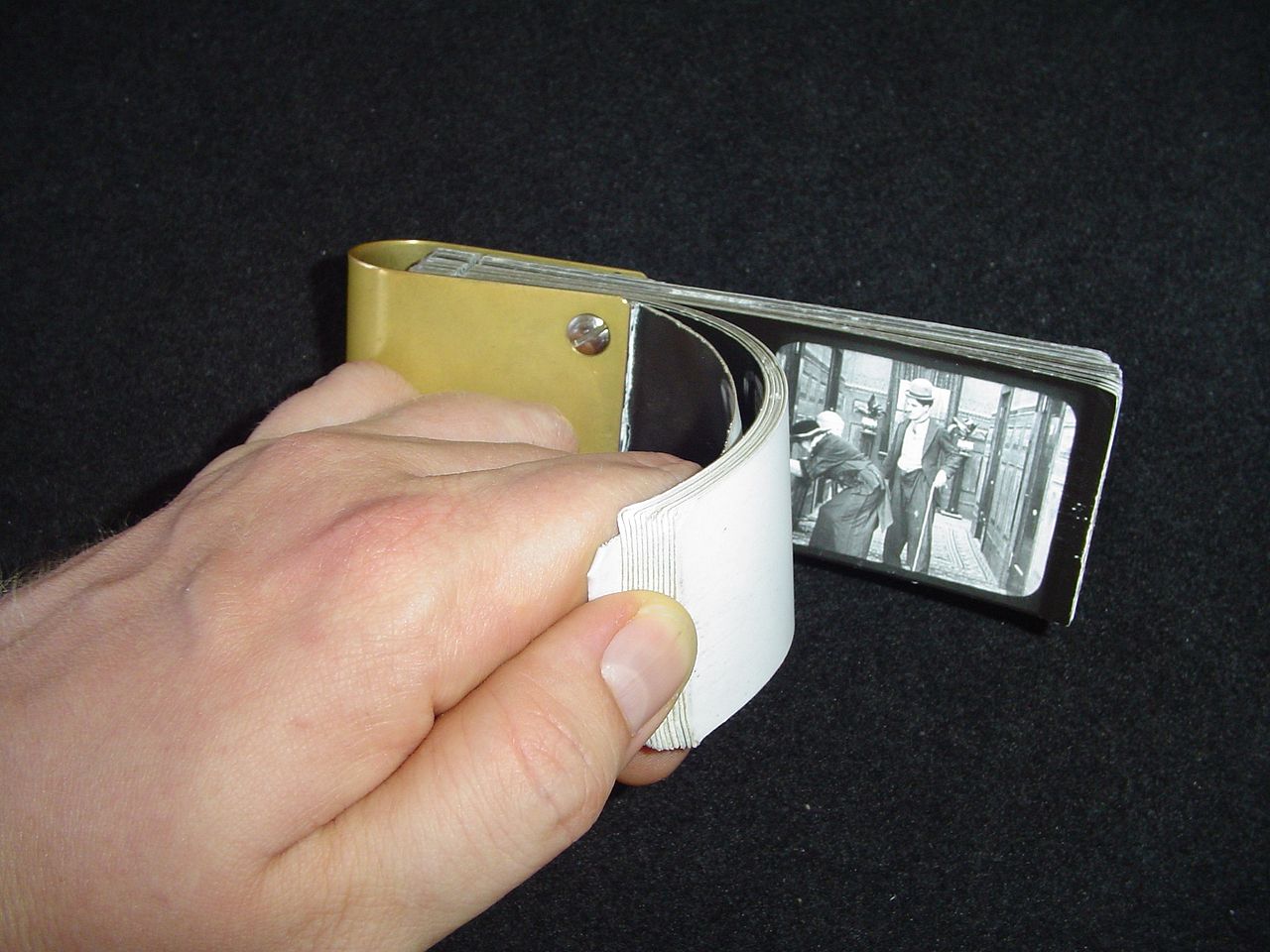Flip book, flicker book, or kineograph 1868 - early visual media
Flip books, flicker books, and kineographs were some of the earliest forms of visual media that captured and displayed the illusion of motion. These simple and affordable devices entertained people for centuries, paving the way for the development of more sophisticated forms of animation and filmmaking.
A flip book is a small book with a series of illustrations that change slightly from one page to the next. When the pages are flipped rapidly, the images appear to animate, creating the illusion of motion. The first flip books were created in the late 19th century and were usually made of paper. They were often sold as toys or novelties, and were popular among children and adults alike.
Flicker books, also known as stroboscopic books, work on a similar principle to flip books, but instead of flipping pages, the images are displayed in a rapid succession, usually by means of a spinning wheel or a hand-cranked mechanism. The wheel is divided into sections, each of which displays a different image. When the wheel is spun rapidly, the images appear to animate, creating the illusion of motion.
In the late 19th and early 20th centuries, flip books, flicker books, and kineographs were used for a wide range of purposes, from simple entertainment to educational tools. They were often used to demonstrate scientific principles, such as the persistence of vision, which is the phenomenon that allows us to perceive continuous motion from a series of still images displayed in rapid succession.
John Barnes Linnett is credited with the oldest known documentation of the flip book, having patented it on March 18, 1868, under the name Kineograph. The flip book was the first animation to use a linear sequence of images, as opposed to circular sequences found in older devices like the phenakistoscope.
In conclusion, flip books, flicker books, and kineographs were some of the earliest forms of visual media that captured and displayed the illusion of motion. Despite their simplicity, these devices had a profound impact on the development of visual media, and paved the way for the development of more sophisticated forms of animation and filmmaking.
Today, they serve as an important reminder of the ingenuity and creativity of early animators and filmmakers, and of the early history of the animation and film industries. These early visual media may be simple in comparison to the complex technologies we have today, but they represent an important step in the evolution of visual storytelling and entertainment.







Comments
Post a Comment